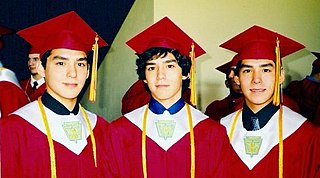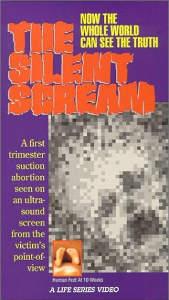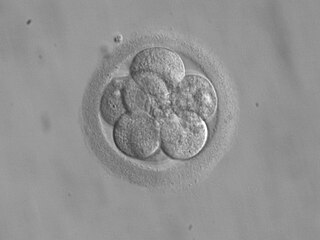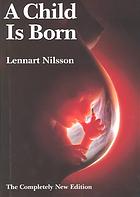
A multiple birth is the culmination of one multiple pregnancy, wherein the mother gives birth to two or more babies. A term most applicable to vertebrate species, multiple births occur in most kinds of mammals, with varying frequencies. Such births are often named according to the number of offspring, as in twins and triplets. In non-humans, the whole group may also be referred to as a litter, and multiple births may be more common than single births. Multiple births in humans are the exception and can be exceptionally rare in the largest mammals.
Numerous religious traditions have taken a stance on abortion but few are absolute. These stances span a broad spectrum, based on numerous teachings, deities, or religious print, and some of those views are highlighted below.
Libertarians promote individual liberty and seek to minimize the role of the state. The abortion debate is mainly within right-libertarianism between cultural liberals and social conservatives as left-libertarians generally see it as a settled issue regarding individual rights, as they support legal access to abortion as part of what they consider to be a woman's right to control her body and its functions. Religious right and intellectual conservatives have attacked such libertarians for supporting abortion rights, especially after the demise of the Soviet Union led to a greater divide in the conservative movement between libertarians and social conservatives. Libertarian conservatives claim libertarian principles such as the non-aggression principle (NAP) apply to human beings from conception and that the universal right to life applies to fetuses in the womb. Thus, some of those individuals express opposition to legal abortion. According to a 2013 survey, 5.7/10 of American Libertarians oppose making it more difficult for a woman to get an abortion.

Obstetric ultrasonography, or prenatal ultrasound, is the use of medical ultrasonography in pregnancy, in which sound waves are used to create real-time visual images of the developing embryo or fetus in the uterus (womb). The procedure is a standard part of prenatal care in many countries, as it can provide a variety of information about the health of the mother, the timing and progress of the pregnancy, and the health and development of the embryo or fetus.

Lennart Nilsson was a Swedish photographer noted for his photographs of human embryos and other medical subjects once considered unphotographable, and more generally for his extreme macro photography. He was also considered to be among Sweden’s first modern photojournalists.
Ectogenesis is the growth of an organism in an artificial environment outside the body in which it would normally be found, such as the growth of an embryo or fetus outside the mother's body, or the growth of bacteria outside the body of a host. The term was coined by British scientist J.B.S. Haldane in 1924.
Fetal viability is the ability of a human fetus to survive outside the uterus. Medical viability is generally considered to be between 23 and 24 weeks gestational age. Viability depends upon factors such as birth weight, gestational age, and the availability of advanced medical care. In low-income countries, half of newborns born at or below 32 weeks gestational age died due to a lack of medical access; in high-income countries, the vast majority of newborns born above 24 weeks gestational age survive.

An artificial womb or artificial uterus is a device that would allow for extracorporeal pregnancy by growing a fetus outside the body of an organism that would normally carry the fetus to term.
In religion and philosophy, ensoulment is the moment at which a human or other being gains a soul. Some belief systems maintain that a soul is newly created within a developing child and others, especially in religions that believe in reincarnation, that the soul is pre-existing and added at a particular stage of development.

Pregnancy is the time during which one or more offspring develops (gestates) inside a woman's uterus (womb). A multiple pregnancy involves more than one offspring, such as with twins.
Prenatal development includes the development of the embryo and of the fetus during a viviparous animal's gestation. Prenatal development starts with fertilization, in the germinal stage of embryonic development, and continues in fetal development until birth.
Prenatal perception is the study of the extent of somatosensory and other types of perception during pregnancy. In practical terms, this means the study of fetuses; none of the accepted indicators of perception are present in embryos. Studies in the field inform the abortion debate, along with certain related pieces of legislation in countries affected by that debate. As of 2022, there is no scientific consensus on whether a fetus can feel pain.
Fetal rights are the moral rights or legal rights of the human fetus under natural and civil law. The term fetal rights came into wide usage after Roe v. Wade, the 1973 landmark case that legalized abortion in the United States. The concept of fetal rights has evolved to include the issues of maternal substance use disorders, including alcohol use disorder and opioid use disorder. Most international human rights charters "clearly reject claims that human rights should attach from conception or any time before birth." While international human rights instruments lack a universal inclusion of the fetus as a person for the purposes of human rights, the fetus is granted various rights in the constitutions and civil codes of several countries.

The Silent Scream is a 1984 anti-abortion film created and narrated by Bernard Nathanson, a former abortion provider who had become an anti-abortion activist. It was produced by Crusade for Life, Inc., an evangelical anti-abortion organization, and has been described as a pro-life propaganda film. The film depicts the abortion process via ultrasound and shows an abortion taking place in the uterus. During the abortion process, the fetus is described as appearing to make outcries of pain and discomfort. The video has been a popular tool used by the anti-abortion campaign in arguing against abortion, but it has been criticized as misleading by members of the medical community.
In Judaism, views on abortion draw primarily upon the legal and ethical teachings of the Hebrew Bible, the Talmud, the case-by-case decisions of responsa, and other rabbinic literature. While all major Jewish religious movements allow or encourage abortion in order to save the life of a pregnant woman, authorities differ on when and whether it is permitted in other cases.
A fetus or foetus is the unborn offspring that develops from an animal embryo. Following embryonic development the fetal stage of development takes place. In human prenatal development, fetal development begins from the ninth week after fertilization and continues until birth. Prenatal development is a continuum, with no clear defining feature distinguishing an embryo from a fetus. However, a fetus is characterized by the presence of all the major body organs, though they will not yet be fully developed and functional and some not yet situated in their final anatomical location.

The beginning of human personhood is the moment when a human is first recognized as a person. There are differences of opinion as to the precise time when human personhood begins and the nature of that status. The issue arises in a number of fields including science, religion, philosophy, and law, and is most acute in debates relating to abortion, stem cell research, reproductive rights, and fetal rights.
Muslim views on abortion are shaped by Hadith, as well as by the opinions of legal and religious scholars and commentators. The Quran does not directly address intentional abortion, leaving greater discretion to the laws of individual countries. Although opinions among Islamic scholars differ over when a pregnancy can be terminated, there are no explicit prohibitions on a woman's ability to abort under Islamic law.
Foeticide, or feticide, is the act of killing a fetus, or causing a miscarriage. Definitions differ between legal and medical applications, whereas in law, feticide frequently refers to a criminal offense, in medicine the term generally refers to a part of an abortion procedure in which a provider intentionally induces fetal demise to avoid the chance of an unintended live birth, or as a standalone procedure in the case of selective reduction.
Definitions of abortion vary from one source to another. Abortion has many definitions that can differ from each other in significant ways. Given the contentious nature of abortion, lawmakers and other stakeholders often face controversy in defining abortion. Language referring to abortion often reflects societal and political opinions . Influential non-state actors like the United Nations and the Roman Catholic Church have also engendered controversy over efforts to define abortion.







